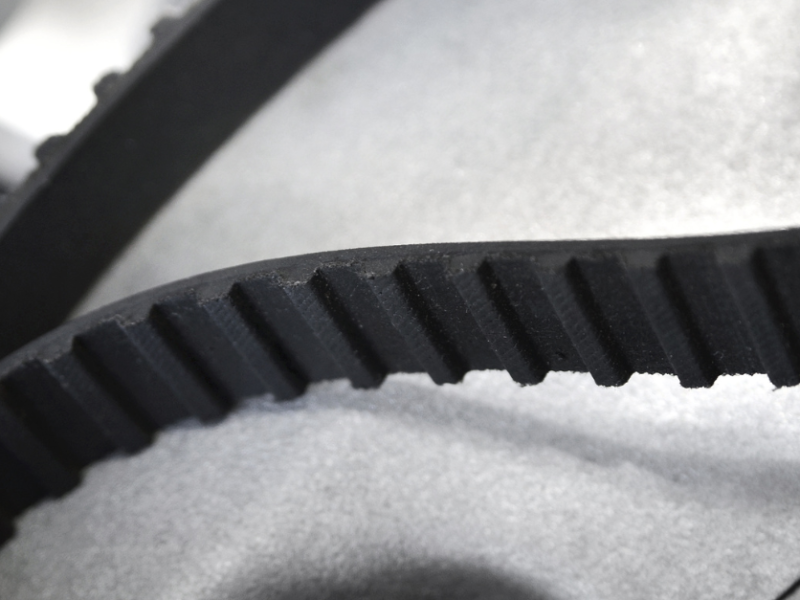Belts versus Chains
When it comes to powering mechanical systems in manufacturing, the choice between belts and chains is critical. Both belts and chains serve similar functions that is transmitting power between shafts; but their performance and suitability can vary significantly depending on the environment and operational requirements of the machinery. This blog will explore the pros and cons of using belts versus chains from two key perspectives: assembly and maintenance. We’ll also consider how the type of workplace, such as dusty or oily environments, impacts the performance of both systems.
Belts in Machinery
Belts are widely used in industries ranging from automotive and agriculture to packaging and food processing. The most common types of belts include V-belts, timing belts, and flat belts, each serving different mechanical needs.
Pros of Using Belts
Ease of Assembly
Belts are usually far easier to install compared to chains and they require less precision when it comes to alignment of shafts and pulleys. Their flexibility enables easier routing around obstacles or components within the machine. No lubrication is needed so that’s a win when it comes to installing as it’s far less messy and belts are far lighter than chains which means they are easier to handle during machinery assembly if you are having a bespoke machine built.
Low Maintenance
Belts are much quieter in operation than chains which can provide advantages in environments where no more noise needs to be added to the production environment or you have strict noise levels within a factory.
Belts create far less wear on pulleys compared to the wear chains exert on sprockets, which can mean a longer life for both the belts and the machinery components. It’s also important to note that belts can absorb shock loads and tolerate some degree of misalignment without damage, reducing the risk of breakdowns.
Cons of Using Belts
Tension Adjustment Required
One of the key disadvantages of belts is that they will stretch over time. There’s no getting away from this. If you use a belt, it will stretch and require regular tension adjustments to maintain efficiency. Failing to re-tension belts can lead to slippage and power loss, which affects machine performance. Worse than that is over time belts can crack, fray, or become brittle, especially in environments with extreme heat or cold. This means periodic inspection and replacement is necessary, which can increase maintenance downtime.
Susceptibility to Harsh Environments
When you consider choosing a belt you must consider the environment; for example, if a workplace generates a lot of dust, such as mining or woodworking facilities, belts can suffer from abrasion as particles accumulate in the pulley grooves. This can accelerate belt wear and cause slippage.
Similarly in oily or greasy environments, like automotive workshops or machinery used in food processing, oils can degrade belts, leading to premature failure. Belts made of rubber or synthetic materials may swell or lose elasticity when exposed to oil, which compromises their performance.
Chains in Machinery
Chains, including roller chains and silent chains, are the go-to option for heavy-duty industrial applications, such as conveyors, agricultural equipment, and heavy machinery. Chains offer robust and reliable power transmission, but their assembly and maintenance come with unique considerations.
Pros of Using Chains
Durability and Strength
Chains have a high load capacity making them ideal for transmitting power in high-torque and heavy-load applications. They can withstand more wear and tear compared to belts and are less likely to stretch, making them suitable for continuous use in demanding environments.
There is longevity with a chains as usually they last longer than belts, especially in applications where constant power and precision are required. They are less prone to slipping and generally have a longer service life.
Low Environmental Impact
Typically, chains are dust and debris resistant performing better in dusty or dirty environments, reducing the chance of wear caused by particles. Chains are more resilient in high-temperature environments where belts may melt, crack, or degrade and provide a more stable option.
Cons of Using Chains
Complex Assembly
Let’s be clear precise alignment is needed. Chains require more precise alignment between the sprockets and the chain itself. Misalignment can lead to premature wear, so careful setup is essential during assembly. This makes chains more time-consuming to install compared to belts.
Chains are much heavier than belts, which adds complexity to handling during assembly. eavy-duty chain installations may require additional equipment like lifts or cranes, increasing setup time and effort.
High Maintenance
There’s a lot to consider for maintenance such as regular lubrication. Chains need consistent lubrication to function smoothly and reduce wear. If lubrication is neglected, the chain can become noisy and may seize, leading to machine failure. This increases maintenance tasks and the overall cost of upkeep.
Chains are usually much noisier than belts, particularly as they wear. In environments where noise is a concern chains may not be the best choice unless mitigated by sound dampening features.
In oily or wet environments, chains are prone to rust if not properly maintained or lubricated. Even stainless-steel chains can suffer from corrosion without the proper protective treatments, increasing maintenance demands.
Environmental Considerations
The environment in which the machinery operates significantly impacts the choice between belts and chains.
If Bennett Engineering are designing a machine to be used in a dusty environment we’ll be considering:
- Dust accumulation
- Frequency of cleaning and replacement
- Resistance to dust and debris
Whereas for an oily environment our considerations will be centred around:
- Exposure to oils and greases
- Degradation possibilities
- Contamination of lubricants onto the chain or belt
If the workplace has temperature extremes then we’ll think about:
- Synthetic materials vulnerabilities
- Performance requirements
When choosing between belts and chains for machinery, the decision hinges on factors like ease of assembly, maintenance requirements, and the operating environment. Belts are ideal for lighter applications, quieter operation, and simpler assembly, but they may struggle in dusty or oily environments and require frequent tensioning and maintenance. Chains, on the other hand, offer superior strength, durability, and performance in harsher, high-torque conditions but come with higher maintenance demands, such as lubrication and more complex assembly.
For dusty environments, chains tend to be the better option due to their resistance to debris, while for oily or greasy environments, chains are preferred for their durability. However, belts can be an excellent choice in cleaner, quieter environments where ease of installation and low noise are priorities. By carefully assessing the specific needs of the machinery and its environment, Bennett Engineering will make informed choices that maximise efficiency and minimise downtime which is essential to every manufacture and their machinery.
So if you’re looking to start a project for bespoke machinery the best place to start is with a conversation with Bennett Engineering. Contact us today via phone (01332 419 220) or email info@beneng.co.uk


